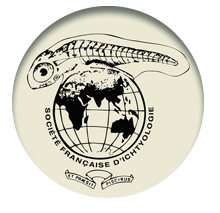Moderate hypoxia or hyperoxia affect fillet yield and the proportion of red muscle in rainbow trout
Despite the common use of oxygen supplementation in fish farms to maintain oxygen level around normoxia, the long-term effects of this practice on zootechnical performance has been extensively described but there is a lack of data concerning fish quality. Rainbow trout were reared in freshwater, from 12 g to 400 g, at three oxygen levels (76 ± 4, 98 ± 14 and 117 ± 12% saturation, mean ± standard deviation) in order to assess the influence of long-term oxygen exposure on fish carcass quality traits in 2 m3 tanks. At the end of the 18 weeks experiment, no effect of oxygen level on fish weight and morphometric traits (condition factor, fish height and width) was observed. No significant effect of oxygen level was measured on carcass yield, viscero-somatic index, nor on hepato-somatic index. In fish reared at 117% oxygen saturation, fillet yields was higher than in the 76% group (+ 2.6%) and concomitantly there was a higher development of red muscle (+ 8.4%). Thus oxygen level was shown to affect carcass quality, but the biological basis of this effect remains to be elucidated.


